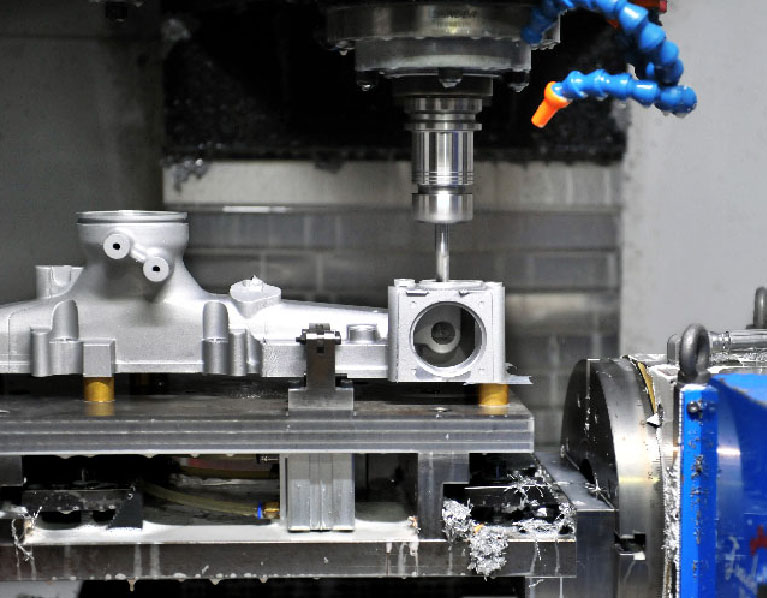Mechanical parts in the automation industry, intelligent manufacturing industry has a very important role. The quality of small parts often plays a crucial role. Today we will simply analyze the common failure forms and causes of mechanical parts.
Failure Forms Of Mechanical Parts Mainly Include:
1. Overall Fracture
When a part is subjected to external loads such as tension, compression, bending, shear and torsion, the fracture occurs because the stress on a dangerous section exceeds the strength limit of the part, or the fatigue fracture occurs on the dangerous section when the part is subjected to variable stress. For example, the fracture of bolt and the fracture of gear tooth root.
2. Excessive Residual Deformation
If the stress acting on the part exceeds the yield limit of the material, the part will produce residual deformation. Excessive residual deformation of clamping positioning parts on the machine tool should reduce the machining accuracy. The residual deflection deformation of high-speed rotor shaft will increase the unbalance and further cause the deformation of parts.
3. Surface Damage Of Parts
The surface damage of parts is mainly corrosion, wear and contact fatigue. Corrosion is an electrochemical or chemical corrosion phenomenon that occurs on the metal surface. The result of corrosion is that the metal surface is rusted, thus the part surface is damaged. At the same time, corrosion fatigue will also be caused for parts subject to variable stress.
Wear is the loss or transfer of surface materials during the relative movement of two contact surfaces.
Corrosion, wear and contact fatigue are all failure forms that occur gradually with the extension of working time. The metal parts in humid air or in contact with water, steam and other corrosive media may be corroded. The contact surface of all parts in relative motion may be worn. However, contact fatigue may also occur on the surface of parts working under the condition of contact variable stress.
4. Failure caused by breaking normal working conditions
Some parts can work normally only under certain working conditions. For example, the sliding bearing with liquid friction can work normally only when there is a complete lubricating oil film; Belt drive and friction wheel drive can work normally only when the effective circumferential force transmitted is less than the critical friction force. High speed rotating parts can work normally only when their speed and the natural frequency of the rotating parts system avoid an appropriate interval. If these prerequisites are broken, different types of failures will occur. For example, the sliding bearing will be overheated, glued, worn and other forms of failure; The belt drive will slip. High speed rotor will have resonance, which will increase the amplitude and cause fracture failure.
What kind of failure often happens to parts is related to many factors, and it is also different in different industries and different machines. According to the classification results of 1378 failures in the references, the failures caused by corrosion, wear and various fatigue damage accounted for 73.88%, while the failures caused by fracture accounted for only 4.79%. So it can be said that corrosion, wear and fatigue are the main reasons for failure of parts.

Failure Analysis Of Mechanical Parts
The purpose of failure analysis is to find out the leading factors that cause failure and provide reliable basis for accurately determining the main service performance of parts. For example, according to traditional knowledge, the materials of various engine crankshafts are mainly made of 45 steel, which mainly bear high impact and wear resistance. The results of the failure analysis prove that the main failure form of the crankshaft is fatigue fracture, so the fatigue strength should be the main service performance index of the crankshaft design and manufacturing. The ductile iron is selected for manufacturing with high quality, durability and low price. It can be seen that understanding the failure form is one of the basic prerequisites for correct material selection.
In fact, the failure of a part is often quite complex, often not caused by a single reason, but the result of a combination of multiple factors. Therefore, failure analysis is a complex technical work involving a wide range of areas. It is necessary to have a scientific method and a reasonable working procedure.
First, investigate the use site of the parts.
Understand the working environment and failure process of parts, take photos to record the damage of relevant parts and the service life of parts, and collect and save the remains of failed parts for analysis.
Secondly, collect materials for parts and manufacturing process archives.
Recheck the chemical composition and raw material quality of the part materials, and understand the process and operation process of the blank manufacturing, machining, heat treatment, etc. of the parts in detail.
Third, the detection and analysis of the failure part itself.
Analyze the appearance of the damaged part (understand the damage type of the part, find the origin of the damage, observe the surface roughness and geometric shape of the damaged part, etc.), and take samples for fracture analysis, metallographic analysis, mechanical property test, etc. The composition of corrosion products and wear debris collected on the failed parts shall also be analyzed. When necessary, non-destructive testing and fracture mechanics analysis shall be carried out.
Based on the above investigation and analysis results, determine various factors affecting the failure of parts, eliminate the impossible or unimportant factors, and finally determine the real reason for the failure of parts, especially the main reason that plays a decisive role.
The results of failure analysis can not only predict the failure form of parts, but also serve as the basis for selecting materials for parts. At the same time, they can provide instructive data for reasonably formulating the manufacturing process of parts, optimizing the structural design of parts, and developing new materials and processes.


